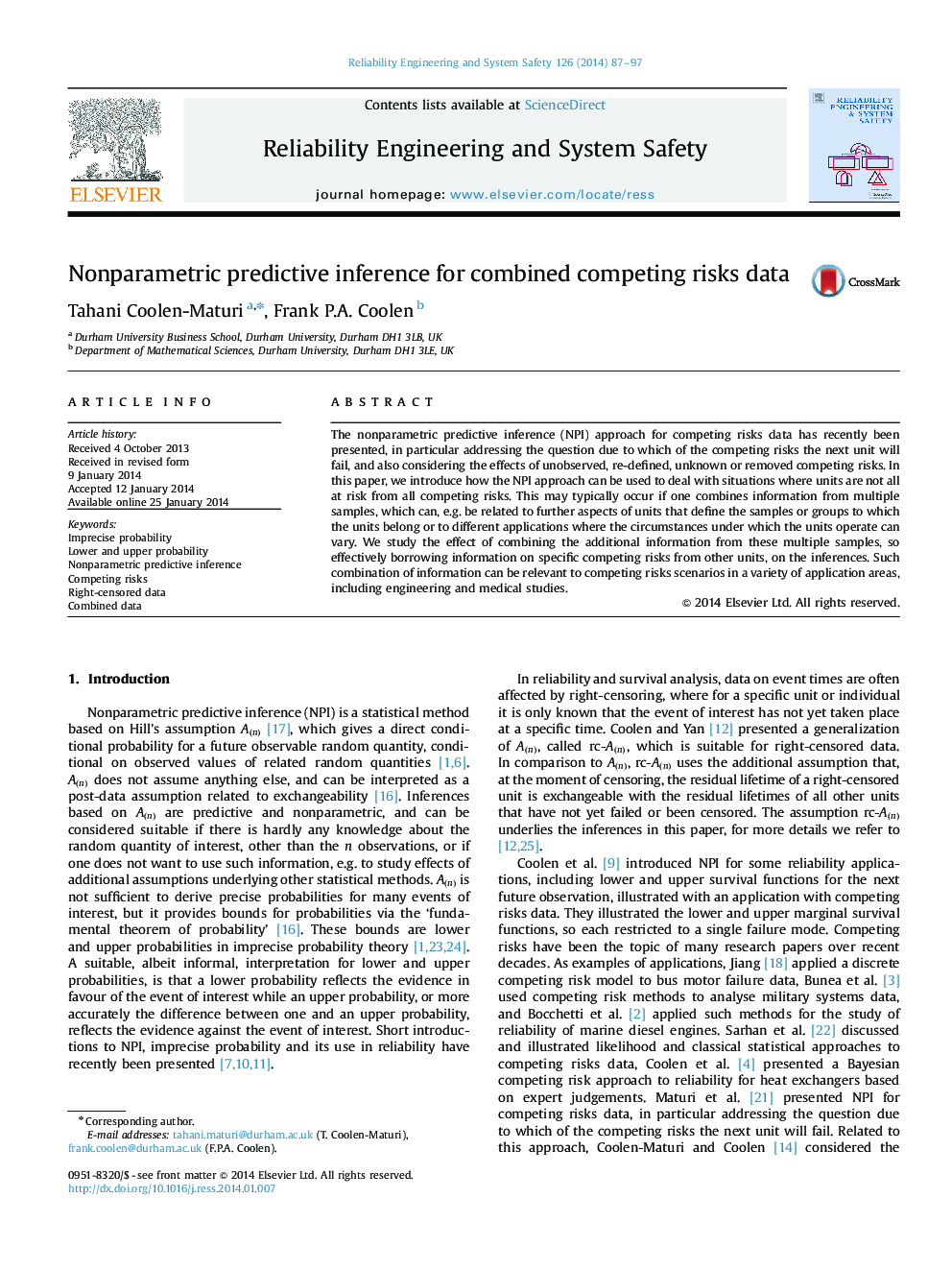| Article ID | Journal | Published Year | Pages | File Type |
|---|---|---|---|---|
| 7195752 | Reliability Engineering & System Safety | 2014 | 11 Pages |
Abstract
The nonparametric predictive inference (NPI) approach for competing risks data has recently been presented, in particular addressing the question due to which of the competing risks the next unit will fail, and also considering the effects of unobserved, re-defined, unknown or removed competing risks. In this paper, we introduce how the NPI approach can be used to deal with situations where units are not all at risk from all competing risks. This may typically occur if one combines information from multiple samples, which can, e.g. be related to further aspects of units that define the samples or groups to which the units belong or to different applications where the circumstances under which the units operate can vary. We study the effect of combining the additional information from these multiple samples, so effectively borrowing information on specific competing risks from other units, on the inferences. Such combination of information can be relevant to competing risks scenarios in a variety of application areas, including engineering and medical studies.
Keywords
Related Topics
Physical Sciences and Engineering
Engineering
Mechanical Engineering
Authors
Tahani Coolen-Maturi, Frank P.A. Coolen,
